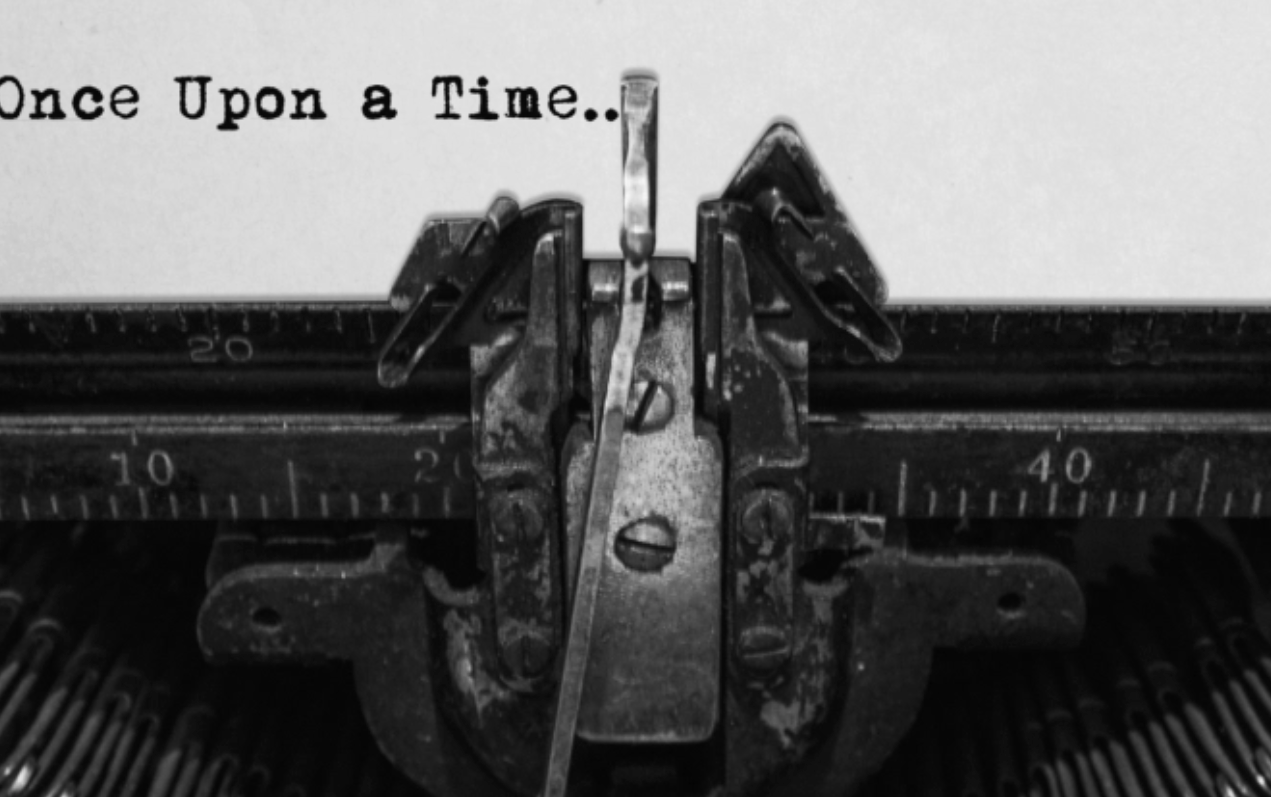Don’t just get a story in your head. Get it into others too

Some bring us laughter, and sometimes they bring us tears. Get it right and people properly engage with your story.
So, there is absolutely one thing that a story must make the viewer/reader do.
They must provoke a feeling. And that feeling should then provoke an action.
This is where the importance of creativity comes in.
Now here, I could sound like I’m stating the bleeding obvious. But that’s just me. I automatically would ask the question ‘this work I’m producing – this story I’m writing - is it mind-numbingly dull? Could it be better?’
Duh…

When I looked a little less haggard, I was brought up in the world of advertising. I was fortunate enough to be taught by some of the finest creative directors in the game. And they’re, let’s say….picky. That’s why they’re so good.
What I mean here is this. You have to be interesting. Anyone can create a dull ad. Of course they can. But to create something that proverbially hits people between the eyes and ears is where you have to be. Nobody got bored into buying anything. Except maybe a puzzles compendium.
But now, since we spend 23.786483 hours a day glued to a screen, we need to ensure that the content we create tells a good story.
Ok. Storytelling 101. Where does all of this start? Ideally, it should start with the creative brief. I’m constantly, and consistently, harping on about the need for a good, single-minded proposition. The one thing we need to say. The creative doing this job needs to create something inspiring, so the brief should inspire them. It shouldn’t do the job for them, but it should make them sit up and notice.
The creative mind plays with the objects it loves. So when it comes to briefing – it’s the brief that has to be engaging first. Or there needs to be enough of a spark in there to start a fire in the belly of a creative.
So we have a good brief – certainly a good proposition. Saying JUST ONE THING. Stories do one of three things – educate, instruct or amuse. So it’s important we work out early on, what we want the story to do. So we then need to look at how we build the story. For those that like a bit of a manual, follow these 6 key points to ensure you can be the best storyteller. Ready? Read on.

The 6 key storytelling points.
Point 1. Context. Who are the characters? What is their relationship with each other? When and where does it happen? And when, in terms of time period does it happen? This doesn’t have to be complicated – remember people don’t have time to deal with the complicated. They need it easy. So you need to work it through to make it easy to understand. Simple language. If you can do it with one image, even better.
Point 2. The incitement. Something needs to happen. Humans resist change, so, to get them to sit up and notice, we need something to take place. We introduce a lead character that wants to achieve something.
Point 3: Could we introduce doubt? Often this helps plant the seed of how difficult things can be achieved, helping to make our story human.
Point 4: We raise the action levels. We understand the who, the what, where, when, and the why of our story. We know what’s zigging. Now introduce something definitely zagging against it. Introduce conflict or tension and this part of the story helps reveal the difficulty to be overcome when there’s something in the way.
Then we have point 5. The climax. If this were a film, it would be the final showdown. Or the romantic part where we see the girl get her man or vice versa.
But what we are doing here is ultimately selling something. So we need to change perceptions, or state a truth – certainly, reveal a benefit.
Last of all is point 6 the final resolution. The aftermath to the story's climax.
This is essentially THE POINT. What final point do we want to leave our reader or viewer with?
There was, certainly a long time ago, that if you showed shiny happy people having fun and generally loving life as a result of owning or using your product, then you’d sell them by the lorry load.
But ladies and gentlemen, welcome to the cynical real-world driven by social media. The first people to comment on anything tend to be negative. So people see right through those shiny happy people. Those white teeth. Those smiles. That speckled sunlight. The slow motion. It’s false. Even by Instagram standards.
At this juncture, let me tell you that there are loads more steps, stages, checklists, graphs and diagrams to this process, but I’d like to give you a tiny warning. Creativity is something that can be learned, practiced and refined. Of course it can. But beautifully written, highly engaging, highly effective work is not purely achieved by following a checklist. So I’m not going to give you any more. Certainly not here. But you can download more by clicking the link at the end of this.

I’m going to tell you a story right now.
Around a month or so back, I was walking along a busy city centre street, when I noticed a very small sign placed in the window of a rugby equipment retailer’s window. The sign simply read ‘Would you like to buy this business?’
Of course I immediately thought to myself ‘no’, and walked on. I don’t have a clue about running a rugby equipment business.
At this point I would normally forget about something like that, but it kept tugging away at the shirt tails of my consciousness.
For such a small sign, it was a hugely ineffective piece of communication.
Maybe it was market research. Perhaps the owner was testing whether there was any, let’s say, ‘passing interest’ in purchasing a sportswear store. And he probably found out after a few months.
But, I suspect the owner wanted to sell his store.
So lead with the benefit. Perhaps the headline should have read ‘this store could make you over £150,000 a year. I’d have stopped and thought about it, rather than immediately say no. And I suspect I wouldn’t have been the only one.
So, back to storytelling.
The thing is (and generally what I’ve been driving at) is this:
You have the one thing you want to say. So this allows you to work backwards. You have the ending. The key point is already right in front of you, so just work your way either up to it, or work your way back. Simple. Then all you have to do is work out how quickly you want to deliver your message.
Chances are you know what medium you’re going to work with, so you know how long you have for your delivery. People these days, they say, are impatient. But actually, they aren’t. They’re only impatient when it looks like they’re going to be bored.
So write an absolutely brilliant long copy press ad, targeted at the right people, and you know what, by crikey, it’ll be interesting to the reader, because they couldn’t be more in tune with what you’re saying.
Yes, you’ve told a beautiful story, with a wonderful ending that brings your audience to a final conclusion where they feel compelled to do something. Huzzah!
But if it’s a quick ad in the corner of a web page, you have to put that story across in less than 10 seconds. Better still, do it in 5. Turn your 500 word long copy press ad into 5 words.
I’ll leave you with this. Go to your local book store and rip out the last pages of the first 10 great novels you can find. Now you’re armed with possibly the best propositions there are. Now all you have to do is rewrite the stories based on them. And then make the story 50 words, make it 5, make it serious, make it pant-wettingly funny, or make it beautifully ironic.
The only thing holding you back is your creativity. Easy.
How easy? Well, that would be a different…whotsit.




